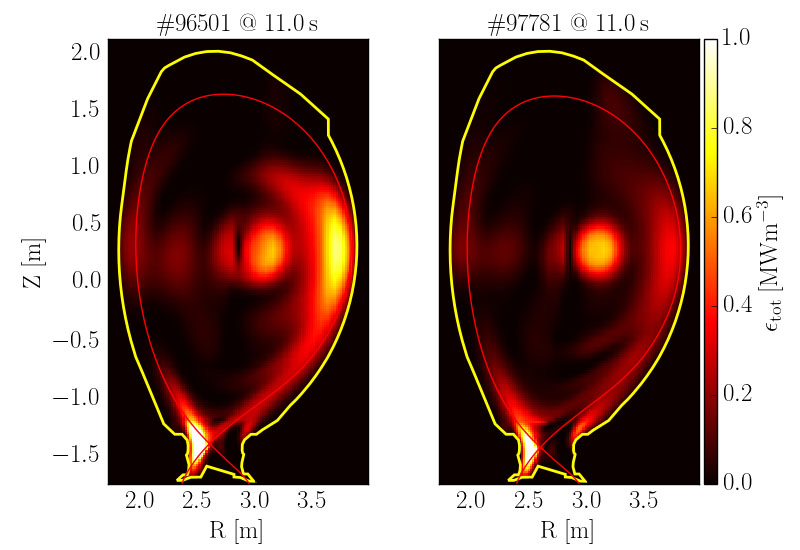 Scientists from EUROfusion, including researchers from the UK (UKAEA), Germany (IPP) and Belgium (ERM-KMS) and from ITER, working at the fusion device Joint European Torus (JET), have discovered a way to boost fusion performance by keeping the contaminant tungsten out of their plasma. Their work has been published in the journal Nuclear Fusion. The JET fusion tokomak employs magnetic fields to confine its plasma, a superheated gas of hydrogen isotopes. Under intense heat – 150 million degC, ten times hotter than the core of the sun – these isotopes fuse into helium, releasing energy as neutrons.
Scientists from EUROfusion, including researchers from the UK (UKAEA), Germany (IPP) and Belgium (ERM-KMS) and from ITER, working at the fusion device Joint European Torus (JET), have discovered a way to boost fusion performance by keeping the contaminant tungsten out of their plasma. Their work has been published in the journal Nuclear Fusion. The JET fusion tokomak employs magnetic fields to confine its plasma, a superheated gas of hydrogen isotopes. Under intense heat – 150 million degC, ten times hotter than the core of the sun – these isotopes fuse into helium, releasing energy as neutrons.
To withstand the intense heat of the fusion process, the tokamak’s inner walls are made from high melting points metals such as tungsten. However, tungsten can contaminate, dilute and cool down the plasma, which happens when the plasma interacts with the machine’s inner metallic walls.
The tungsten impurities cool the plasma by absorbing heat and releasing it in the form of light, which can travel straight out of the plasma. This energy loss effectively cools the plasma and results in fewer fusion reactions.
To prevent this from happening, researchers have discovered a way to limit the tungsten contaminants from affecting the plasma performance. They have found that by creating a particular type of ‘heat barrier’ a few centimetres thick at the edge of the plasma, in the form of a temperature drop of 20 million degC, the tungsten contaminants are prevented from entering the core of plasma.
This method of retaining a ‘clean’ plasma was a hypothesis before recently being demonstrated at JET. The method was trialled as part of a series of experiments contributing to JET breaking the world-record in sustained fusion energy last year.
The demonstration is a major boost for international fusion project ITER, the larger and more advanced version of JET. Dr Anthony Field, senior fusion researcher at UKAEA commented: "Our measurements show that we are one step closer to solving one of the greatest scientific quests of our time. The plasma can keep itself clear of tungsten contaminants that would cool it, by maintaining a temperature drop of twenty million degC at the edge of our plasma. This prevents the tungsten ions from stopping us reaching fusion conditions."
Image: Effect of the ‘heat barrier’ (Credit – Eurofusion)






